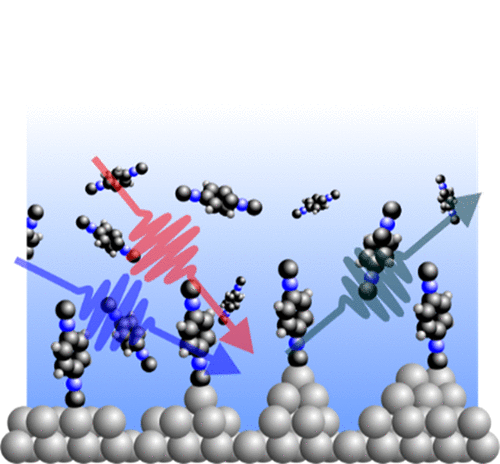当前位置:
X-MOL 学术
›
J. Phys. Chem. C
›
论文详情
Our official English website, www.x-mol.net, welcomes your
feedback! (Note: you will need to create a separate account there.)
Direct Spectroscopic Observation of Cyanide-Induced Restructuring of Pt at the Solid–Liquid Interface
The Journal of Physical Chemistry C ( IF 3.3 ) Pub Date : 2020-02-10 , DOI: 10.1021/acs.jpcc.0c00382 Ahmed Ghalgaoui 1, 2 , Martin Sterrer 1
The Journal of Physical Chemistry C ( IF 3.3 ) Pub Date : 2020-02-10 , DOI: 10.1021/acs.jpcc.0c00382 Ahmed Ghalgaoui 1, 2 , Martin Sterrer 1
Affiliation

|
Obtaining insight into surface restructuring induced by adsorbates is essential for understanding surface (electro)chemical reactions and for better design of functional materials. Here, the microscopic restructuring of Pt(111) upon adsorption of 1,4-phenylene diisocyanide (PDI) at the solid–liquid interface is reported. With in situ vibrational sum-frequency generation spectroscopy supported by ex situ scanning tunneling microscopy studies, the surface-roughening process is followed in real-time by observing the vibrational signal of on-top-bound cyanide as a probe of the local coordination of the adsorption site. These studies show that PDI adsorbs initially on regular Pt(111) surface sites, which are transformed into low-coordinated sites with increasing exposure time. The low-coordinated sites are formed because of PDI-induced extraction of Pt atoms.
中文翻译:

固液界面上氰化物诱导的铂重整的直接光谱观察
深入了解由吸附物引起的表面重组对于理解表面(电)化学反应和更好地设计功能材料至关重要。在这里,据报道,在固液界面吸附了1,4-亚苯基二异氰酸酯(PDI)后,Pt(111)的微观结构发生了变化。借助原位振动隧穿显微镜研究支持的原位振动总和频率产生光谱学,通过观察顶部结合的氰化物的振动信号作为表面的局部配位探针,实时跟踪表面粗糙化过程。吸附部位。这些研究表明,PDI最初会吸附在规则的Pt(111)表面部位,然后随着暴露时间的增加而转变成低配位部位。
更新日期:2020-02-10
中文翻译:

固液界面上氰化物诱导的铂重整的直接光谱观察
深入了解由吸附物引起的表面重组对于理解表面(电)化学反应和更好地设计功能材料至关重要。在这里,据报道,在固液界面吸附了1,4-亚苯基二异氰酸酯(PDI)后,Pt(111)的微观结构发生了变化。借助原位振动隧穿显微镜研究支持的原位振动总和频率产生光谱学,通过观察顶部结合的氰化物的振动信号作为表面的局部配位探针,实时跟踪表面粗糙化过程。吸附部位。这些研究表明,PDI最初会吸附在规则的Pt(111)表面部位,然后随着暴露时间的增加而转变成低配位部位。















































 京公网安备 11010802027423号
京公网安备 11010802027423号